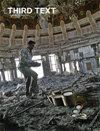种族、气候变化与理查德·莫斯热图中的摄影底片
IF 0.1
3区 艺术学
0 ART
引用次数: 1
摘要
摘要热量的产生、传递和记录如何让我们以不同的方式看待质量位移?通过仔细阅读Richard Mosse的系列《热图》(2016),这篇文章认为热是殖民主义的副产品,也是推动全球流离失所的基本力量。热图使用热敏军用监控摄像头捕捉地中海及其周边地区难民营和拘留中心的难民。虽然莫斯的照片通过色调值的变化将看不见的(身体)热量可视化,但这些看似透明的图像有可能掩盖通过资源提取、性暴力和对殖民的具体抵抗产生热量的其他方式。这篇文章通过历史上伴随着摄影底片的种族焦虑来阅读莫斯的作品,试图解开当代艺术捕捉难民危机时白人凝视的隐形性,同时对观众的修复能力和想象力抱有希望。本文章由计算机程序翻译,如有差异,请以英文原文为准。
Race, Climate Change and the Photographic Negative in Richard Mosse’s Heat Maps
Abstract How might the production, transference and registration of heat allow us to see mass displacement differently? Through a close reading of Richard Mosse’s series, Heat Maps (2016) – which uses a heat-sensitive, military grade surveillance camera to capture refugees in camps and detention centres in and around the Mediterranean – this article considers heat as a byproduct of colonialism, and as an elemental force driving global displacement. While Mosse’s photographs visualise unseen (body) heat through shifts in tonal value, these seemingly transparent images risk obscuring the other ways heat is produced through resource extraction, sexual violence and embodied resistance to colonisation. Reading Mosse’s work through the racial anxieties that have historically accompanied the photographic negative, the article attempts to unravel the invisibility of the white gaze in contemporary art’s capturing of the refugee crisis, while at the same time holding out hope for the reparative and imaginative capacities of the viewer.
求助全文
通过发布文献求助,成功后即可免费获取论文全文。
去求助
来源期刊

Third Text
ART-
CiteScore
0.40
自引率
0.00%
发文量
39
期刊介绍:
Third Text is an international scholarly journal dedicated to providing critical perspectives on art and visual culture. The journal examines the theoretical and historical ground by which the West legitimises its position as the ultimate arbiter of what is significant within this field. Established in 1987, the journal provides a forum for the discussion and (re)appraisal of theory and practice of art, art history and criticism, and the work of artists hitherto marginalised through racial, gender, religious and cultural differences. Dealing with diversity of art practices - visual arts, sculpture, installation, performance, photography, video and film.
 求助内容:
求助内容: 应助结果提醒方式:
应助结果提醒方式:


